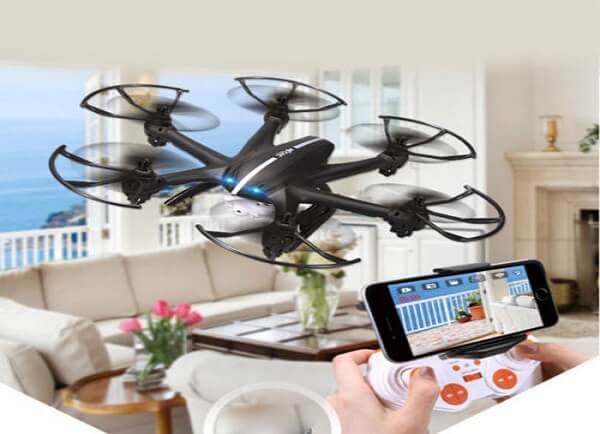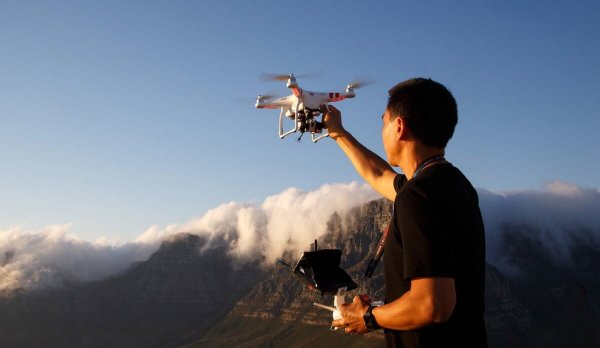Photography & Aerial Videography Tips
The development of faster, stronger, user-friendly drones with built-in video cameras means that filmmaking has become a lot easier for many wannabe directors. The problem is that this perceived ease of use and the development of the camera means that it is easy to minimize the amount of work that has to go into creating these shots.
The following guide offers a series of simple photo and aerial videography tips for newcomers to using a drone that should help you to create a great looking piece of footage with ease.
1. Begin With Choosing Your Equipment

The first question you need to ask yourself if you are new to the game is which is the right quadcopter and the right camera for your needs? A quadcopter is a good place to start looking because of the stability in the four rotors, but there are lots of different types of UAV out there with different capabilities.
A quadcopter is a good place to start looking because of the stability in the four rotors, but there are lots of different types of UAV out there with different capabilities.
Some have a removable camera and gimbal so that other models can be attached when needed – allowing for the use of easy-to-use GoPros or a more expensive DSLR – but others have some pretty impressive inbuilt cameras with 4k video capabilities and mobile apps.
Don’t forget to use active gimbal and prop balancer for movement and stability. The compatibility of the GoPro with these features is why it is so highly regarded for basic level film-making.
2. Know-How To Use This Equipment Properly

It should go without saying that you need to learn to fly the drone properly before getting involved in the videography side of the operation. You can’t multitask with flight operations and camera work if you aren’t comfortable up in the air.
Learn how to fly with precise movements for a better quality shot. Find out how to control a smooth, level flight for those professional establishing shots. Find out how to hover carefully over a subject of importance.
Primarily, learn everything you can to make sure that the project runs smoothly. Get to know all the settings and flight modes before embarking on an important shoot.
Is GPS enabled with this drone, are you able to use an auto-pilot mode or is it all manual? Also, are there other unique features in the software that could have an impact on the film?
3. Be Prepared For All Eventualities When Filming

It is important to create a checklist before each flight so that everything runs like clockwork: is the unit calibrated, is the battery fully charged for the full flight time, is the area safe and are all the parts in working order? If you tick all of this off, you are cleared for takeoff.
It also pays to have a disaster plan in place in case of a problem. Health and safety are crucial when shooting scenes around people as everyone involved need to be aware of the dangers and to handle the drone responsibly.
That means it delivered for different weather conditions. High winds can play havoc with a shoot; rain could set back the footage (and the drone), and bright sunlight can distort the image.
On the subject of health and safety, it is also important that you understand local UAV regulations. The last thing that you want is to get in hot water with the authorities because you didn’t appreciate the laws about UAVs – it could ruin the whole project.
Recreational flyers in the US need to be careful about establishing a direct line of sight and to ensure that they do not fly directly over people, in national parks, above 400ft or in the night. Also, drones weighing more than the 250g need to be registered.
4. Plan The Shoot As Best You Can Before Getting In The Air

Planning is vital so that you can know precisely where you are going to fly when you are going to shoot and to make sure to avoid any obstacles.
Fly through the shot, plan your shots ahead of time, be aware of your flight time and always establish that direct light of sight. The worst thing for filmmakers is to have no room for error.
A little leeway helps the team to edit footage with space at either end of the shot. This means flying through the shot, so that you are already on the right flight path for the intended footage, and ensuring that you aren’t shooting to the final second.
You need to use the time wisely to be able to cut the footage down. Understanding your flight time also means being able to set the machine back down before it runs out of power. There are two scenarios here that might ruin a shot if you are filming to the last second: one, the GPS returns the drone to the start point mid take; two, the drone falls out the sky and crashes. Try and land safely with a minute to spare before recharging or replacing the battery.
5. Rework Ideas And Shoot Again

You won’t get everything perfect on the first flight, and there are always lessons to learn and mistakes to rectify. Reconsider the shots from a different angle – from a first-person perspective – to add another element to the process.
This can allow for greater control over the image and a better sense of what is being captured, but you will also need someone to keep an eye on the drone while you are in this mode.
Also, be honest enough to reconsider the settings. If you have trouble getting a smooth shot, you may want to change the sensitivity of the joystick.
6. Practice And Planning Make Perfect

Aerial videography takes practice and patience to perfect. Think about your equipment, your planned shots, and your environmental conditions before setting off.
Make sure that you have an own good idea of how to handle the drone and the settings, and take your time to get the best footage from the allocated flight time.
Once the first flight is over, review the images, reconsider your strategy if there are problems and get back in the air for another round.
